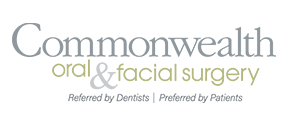Orthognathic surgery refers to “straightening of the jaw(s) using surgery” (ortho-straight, gnathic-of or relating to the jaw(s)). Whereas orthodontic treatment corrects the position of the teeth, orthognathic surgery positions the bones of the jaws. When the upper and lower jaw (maxilla/mandible) aren’t properly aligned or teeth don’t seem to fit correctly with the jaws, problems can arise, including issues with speech, breathing difficulty, eating difficulty, a protruding jaw and teeth that don’t meet in the front. Orthognathic surgery resolves these issues to promote optimal jaw function and comfort.
One or both jaws may be surgically repositioned during one operation. This involves making cuts in the bones and moving the cut segments into their predetermined position, in the hospital, under general anesthesia. Surgery is normally preceded by a period of orthodontic treatment so that post-operatively both the teeth and the bones will be in their correct position. Finally, a period of orthodontic treatment is usually required to complete the alignment of the teeth.

